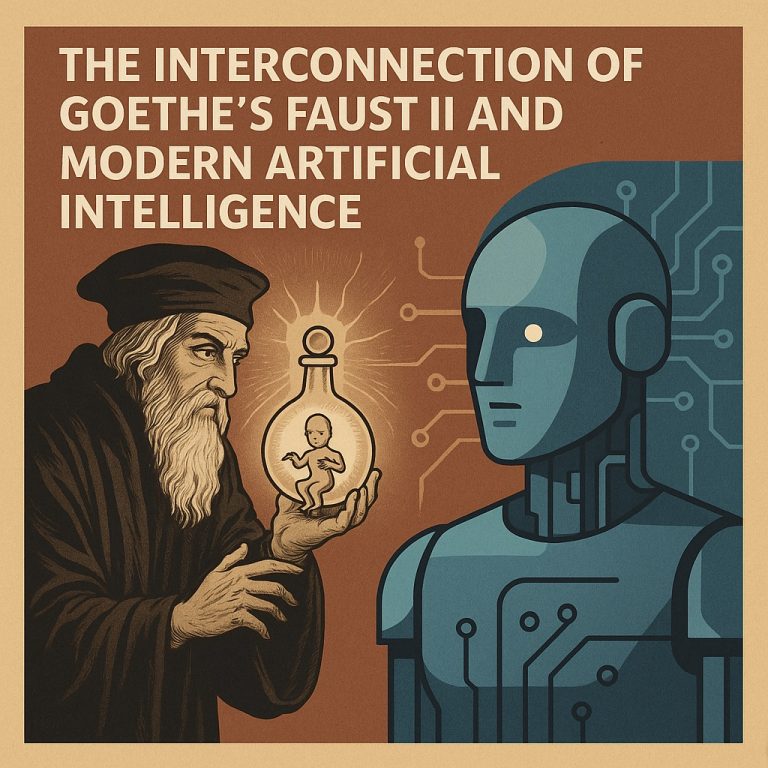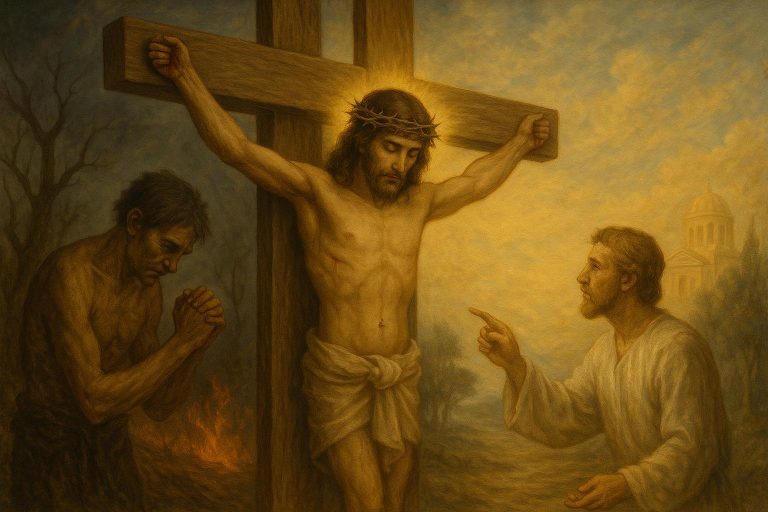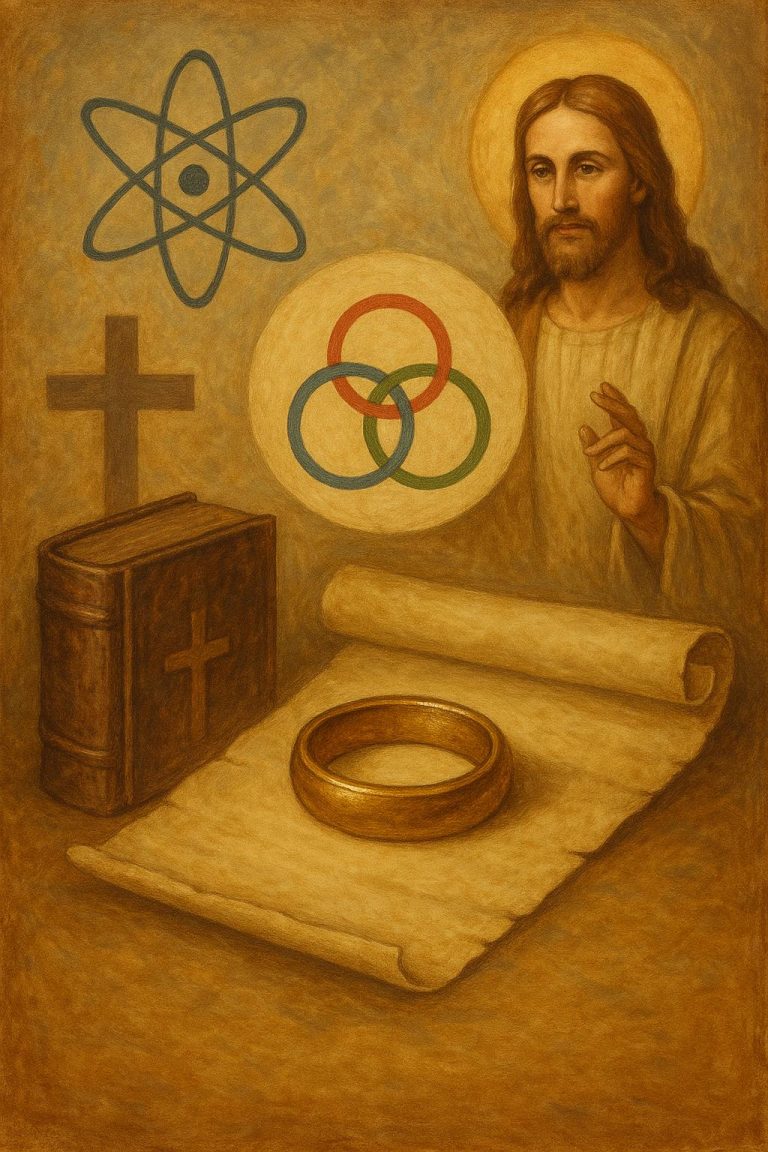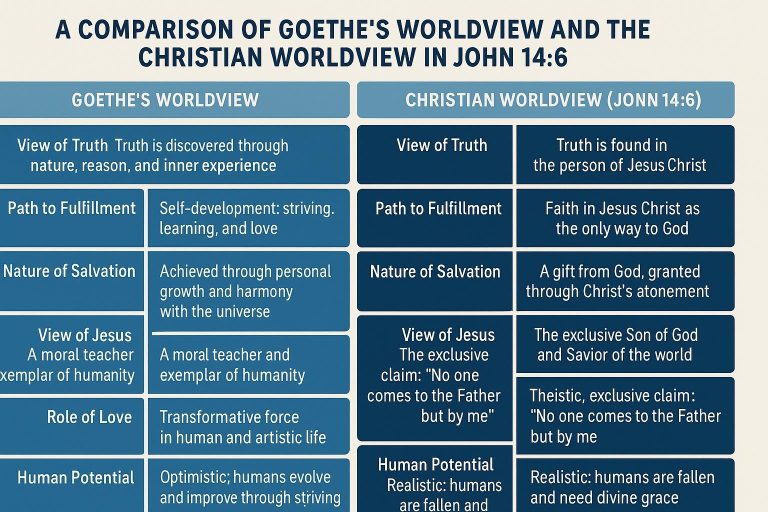From Deism to Kafka: Logic, Irrationality and the Hidden Order of Things
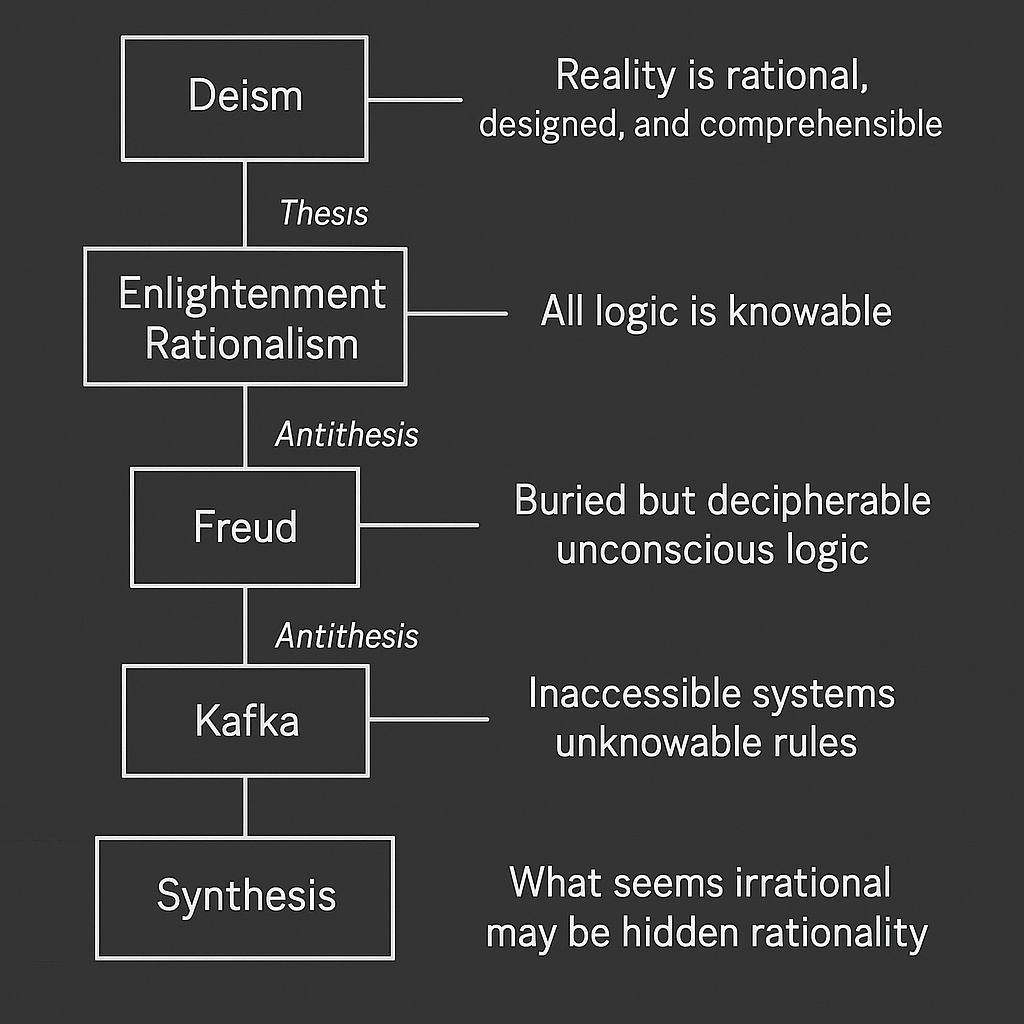
“What we call irrational may simply be logic we do not yet understand.”
Human history is filled with attempts to make sense of the world. We’ve sought patterns, laws, and meanings behind events — certain that reality follows a logic that reason can uncover.
But as we’ve climbed the ladder of knowledge, we’ve discovered unexpected layers: hidden rules, conflicting forces, and systems whose meaning remains opaque.
This journey — from the optimism of the Enlightenment to the unsettling visions of Freud and Kafka — reveals an evolving understanding of what logic means, and how far human reason can go.
1. Deism — The Clockmaker’s Logic
In the Enlightenment era, Deism painted a comforting picture:
- The universe was created by a rational God, the “divine clockmaker.”
- Nature’s laws were perfectly designed and consistent.
- The world was comprehensible through reason and observation.
This was the thesis:
Reality is rational, designed, and fully comprehensible to those who seek its truth.
2. Enlightenment Rationalism — All Logic Is Knowable
Even without the Deist’s personal God, Enlightenment thinkers believed all logic is ultimately knowable.
- Science and philosophy were the tools to uncover every mystery.
- What we call “irrational” was simply not yet explained.
This vision promised a future in which the “clock” of reality would be fully dismantled, studied, and mastered.
3. Freud — Buried Logic in the Unconscious
Sigmund Freud disrupted this optimism.
- Much of human thought and behavior, he argued, is driven by unconscious forces.
- These forces follow their own internal logic — but one that is hidden from conscious awareness.
- Dreams, slips of the tongue, and irrational fears are not random; they are coded messages from the unconscious.
First Antithesis:
Logic exists, but it is buried — and can only be uncovered through careful analysis.
4. Kafka — Inaccessible Logic
Where Freud offered hope of deciphering hidden patterns, Franz Kafka painted a darker picture.
- In The Trial and The Castle, characters face vast systems with rigid but incomprehensible rules.
- The rules are consistent — but inaccessible to the individual.
- The result is a world where order and absurdity are indistinguishable.
Further Antithesis:
Logic may exist, but we may never be able to grasp it.
5. Synthesis — Apparent Irrationality as Hidden Logic
From Deism to Kafka, the progression can be seen as a ladder:
Synthesis:
What appears irrational is often a deeper rationality — one we may only partially access.
This doesn’t mean abandoning reason. Instead, it means tempering Enlightenment optimism with humility about human limits.
6. Why This Matters Now
In an age of AI algorithms, complex global systems, and massive data flows, the tension between visible and hidden logic is more relevant than ever.
- Freud’s lesson: Some patterns require a shift of perspective to uncover.
- Kafka’s warning: Some patterns may remain outside our grasp.
- Deism’s reminder: The fact that we don’t understand them doesn’t mean there is no order.
Conclusion — Living Between Light and Shadow
From the clockmaker God to the bureaucratic mazes of Kafka’s fiction, the search for meaning is not a straight path but a climb. Each rung — Deism, Enlightenment Rationalism, Freud, Kafka — brings us closer to understanding, but also reveals new mysteries above.
We live in the space between the Enlightenment’s light and Kafka’s shadow, and if God had not opened a door through Jesus Christ, we forever would be chasing the hidden logic behind what we call absurd.

